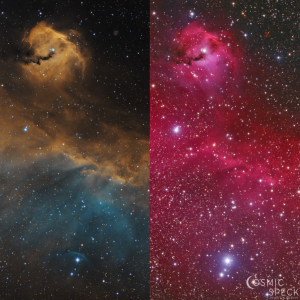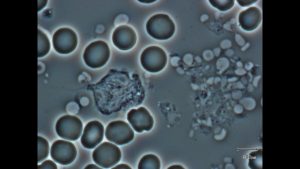
Above: the color of a galaxy through our eyes, vs the ACTUAL colors of the galaxy with no light filtered. (Hydrogen = red. We’d be able to see a lot less if our eyes were big enough to absorb the big red waves H emits on a cosmic scale.)
Other great stuff:
Researchers in India are currently experimenting with nanomotors which can map, track, and even force cell motility using magnetism. This has interesting advantages over chemical, surgical (and sonic?) techniques we already use, and can even mess with DNA via gene silencing. Implications with everything from general research, to cancer treatments, to gene modification. No small fry.
American researchers just came up with a new compound that can probably rebuild tooth enamel at the molecular level.
(Knew holding out on my dentist was a good idea.)
AI has helped researchers invent a new type of metallic glass, and they’re saying its machine learning helped them make this breakthrough 200x faster.
Last one: a method of creation that I made up and have been using in a work-in-progress has just been transferred from science fiction, into reality.
(Wait a year and a half more, and Sophia will probably have a book out praising it.)
Edit: I WAS RIGHT.
I’ll say it again and again: anyone who writes science fiction and wants its science to be realistic but futuristic….well, some things still are just a matter of time.
Suggestions from the back of my head to its front:
Maybe read War of the Worlds for a sci-fi appreciation of what-was (and language that’ll turn your tongue into a roller coaster track in a fun way.)
Check out the tech in the Starship Troopers novel again, and ask again how much of it’s untested today.
Or maybe, enjoy you some star trek, while looking up show facts on your mobile.
Meanwhile, never underestimate how much butt dedicated humans can kick. We make nifty things.




